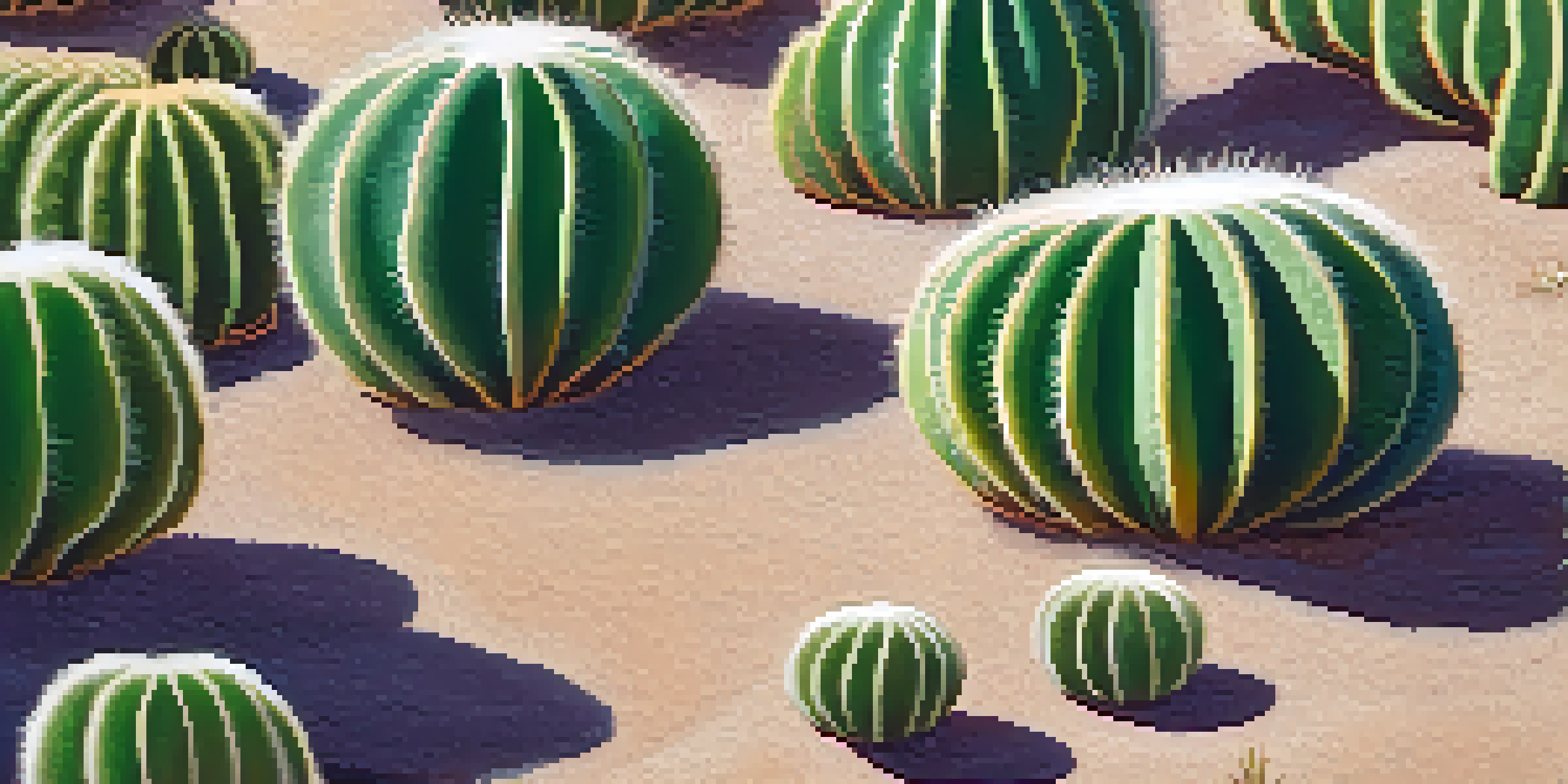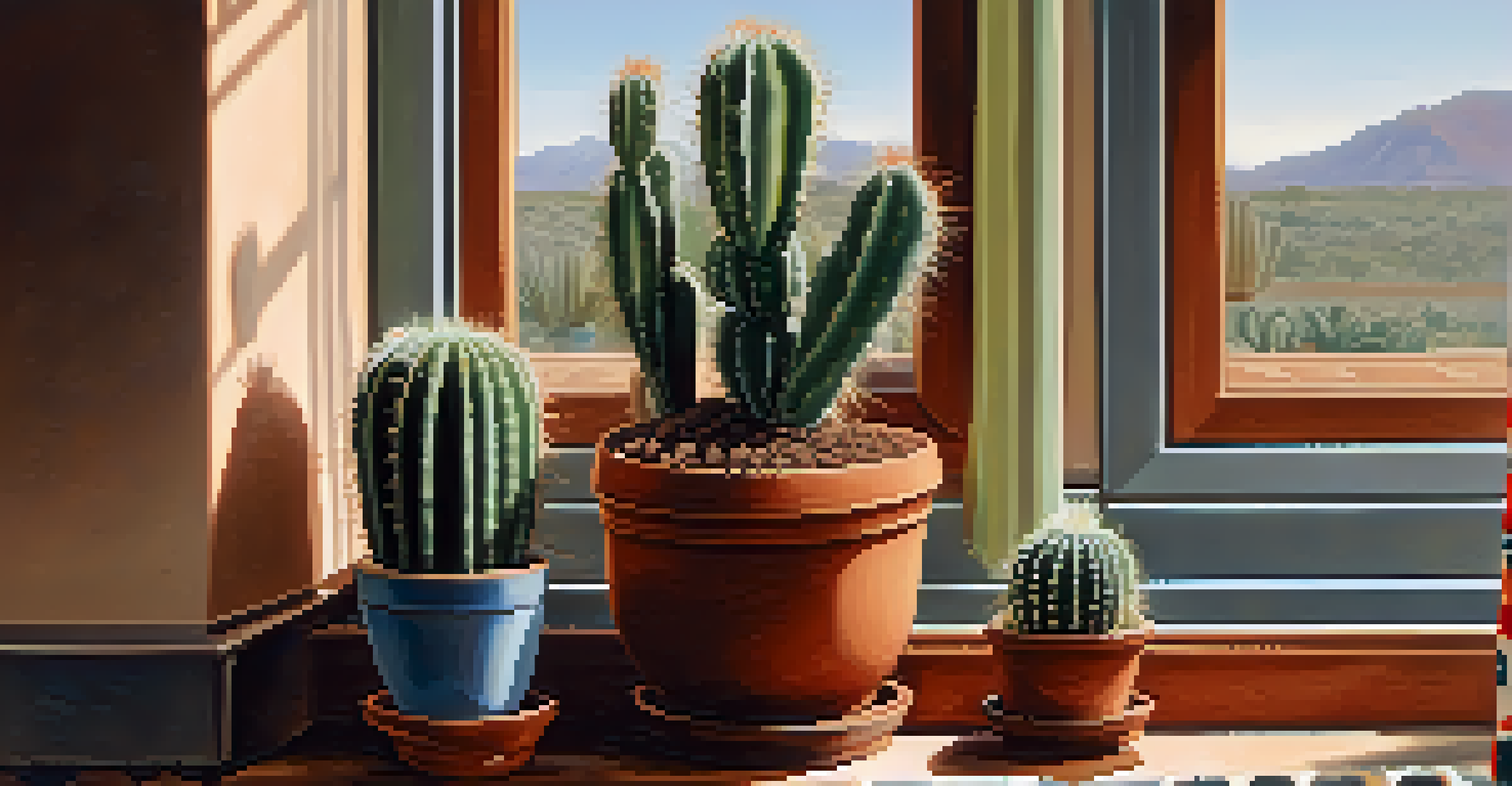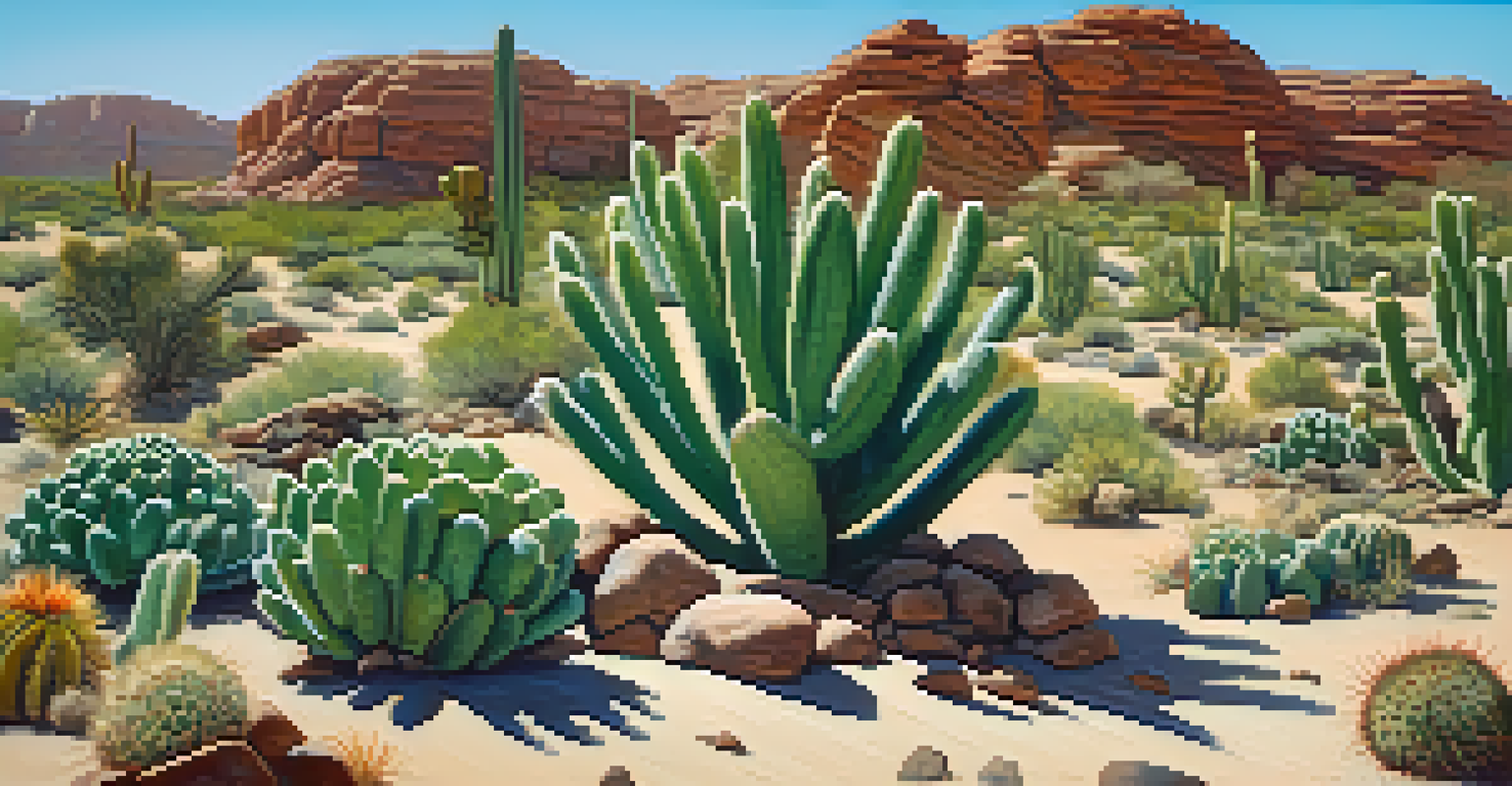Essential Environmental Conditions for Peyote Growth

Understanding the Native Habitat of Peyote
Peyote, a small cactus native to the Chihuahuan Desert, thrives in specific environmental conditions. Understanding its native habitat helps in replicating the right settings for successful growth. It naturally grows in rocky, well-drained soils, often under the shade of larger plants, which provides a crucial balance of light and moisture.
Plants are like people; they need the right environment to thrive.
In its native environment, peyote experiences extreme temperatures, with hot days and cooler nights. This temperature variation is essential for its metabolic processes and overall health. Additionally, the cactus has adapted to survive in arid conditions, requiring minimal water to flourish.
Mimicking these natural surroundings can significantly enhance the growth of peyote in cultivation. By creating a similar environment, growers can ensure that their plants thrive as they would in the wild, leading to healthier and more vibrant specimens.
Soil Requirements for Optimal Growth
The soil composition is a critical factor in peyote cultivation. Peyote prefers sandy or rocky soils that offer excellent drainage, as this prevents root rot—one of the most common issues faced by growers. A mixture of sand, perlite, and cactus soil can create an ideal medium for these plants.

Incorporating organic matter into the soil can also provide essential nutrients without retaining too much moisture. This balance is vital because peyote is adapted to dry conditions and does not thrive in overly wet environments. Testing the soil pH can further optimize conditions, with a slightly acidic to neutral pH being ideal.
Ideal Habitat for Peyote Growth
Peyote thrives in rocky, well-drained soils and requires specific temperature and light conditions to mimic its natural desert environment.
Regularly checking soil conditions and adjusting as needed will help ensure that your peyote plants receive the right support for healthy growth. A well-draining soil mix not only mimics its natural habitat but also contributes to a strong root system, which is essential for nutrient absorption.
Light Requirements for Healthy Peyote Growth
Light plays a significant role in the growth of peyote, and getting it right can be the difference between a thriving cactus and a struggling one. Peyote requires bright, indirect sunlight to flourish, as too much direct sunlight can lead to sunburn. Partial shade, especially during the hottest parts of the day, is ideal.
The best way to grow is to create conditions that allow for natural resilience.
When growing peyote indoors, placing it near a south or west-facing window can provide sufficient light. Using sheer curtains can help diffuse the sunlight, ensuring the cactus receives the right amount of brightness without the risk of damage. Conversely, if growing outdoors, providing some shade during peak sunlight hours can help maintain its health.
It's important to monitor the light conditions and adjust accordingly. If the cactus begins to stretch or lose its vibrant color, it may be a sign that it needs more light, while browning or wilting leaves can indicate too much exposure.
Temperature Tolerance and Seasonal Changes
Peyote is remarkably resilient and can tolerate a range of temperatures, but it does have its preferences. Ideally, it thrives in temperatures between 70°F to 90°F during the day and can handle cooler nights down to around 50°F. This temperature fluctuation mimics its natural desert environment and supports its growth cycle.
During the winter months, it’s essential to provide a cooler environment, as this rest period is crucial for the plant's health. However, temperatures should not drop below freezing, as this can severely damage the cactus. If necessary, bringing the plants indoors during colder months can help protect them from harsh conditions.
Critical Soil and Water Practices
Using a sandy, well-draining soil mix and adhering to infrequent watering is essential to prevent root rot and support healthy growth.
Being mindful of seasonal changes is key to successful peyote cultivation. Adjusting care routines based on temperature fluctuations can facilitate a healthy growth cycle, ensuring your peyote remains vibrant and resilient throughout the year.
Watering Practices for Successful Cultivation
Watering is one of the most critical aspects of peyote care, and understanding when and how much to water can make a significant difference. Peyote requires infrequent watering, typically every two to three weeks during the growing season. Overwatering is a common mistake that can lead to root rot, so it's essential to let the soil dry out completely between waterings.
During the dormant winter months, watering should be reduced even further, as the plant utilizes minimal moisture during this time. A good rule of thumb is to check the soil moisture level before watering; if it feels dry, it’s time to give your peyote a drink.
Using the right watering technique can also improve the health of your peyote. Watering deeply but infrequently encourages strong root development, which is essential for a thriving cactus. Utilizing a well-draining pot can further enhance this practice, preventing excess moisture accumulation.
Humidity Levels and Their Impact on Peyote
While peyote is adapted to dry desert conditions, understanding humidity levels can help in creating the perfect environment for growth. Ideally, peyote prefers a humidity level of around 30-50%. High humidity can lead to fungal issues, while too little can cause stress to the plant.
For indoor growers, using a hygrometer can help monitor humidity levels effectively. If you find the environment too humid, improving ventilation and airflow can make a significant difference. Conversely, if humidity is too low, a simple humidity tray or occasional misting can provide a boost without overdoing it.
Humidity and Potting Essentials
Maintaining optimal humidity levels and choosing pots with proper drainage are crucial for the well-being of peyote plants.
Maintaining the right humidity levels is essential for healthy peyote growth. By keeping an eye on these conditions, you can ensure that your cactus remains vibrant and well-adapted to its environment, just as it would in its native habitat.
The Importance of Proper Potting and Drainage
Choosing the right pot and ensuring proper drainage is vital for the health of your peyote plant. A pot with drainage holes allows excess water to escape, preventing root rot and promoting healthy growth. Terracotta pots are a popular choice, as they allow for better airflow to the roots and help regulate moisture levels.
When potting peyote, using a well-draining soil mix is just as crucial as the container itself. Mixing cactus soil with sand or perlite can enhance drainage, creating an ideal environment for root development. This setup mimics the rocky soil where peyote naturally thrives.

Re-potting can also be beneficial, especially if the plant outgrows its current container. This allows for fresh soil and more room for growth, ensuring that your peyote has the best chance of thriving in its cultivated environment.